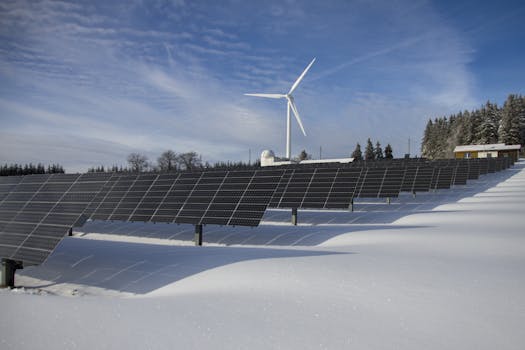Top Reasons Why a Photovoltaic System Does Not Produce Energy: Diagnosis
Photovoltaic (PV) systems are a popular choice for harnessing solar energy, providing a sustainable and renewable source of power. However, there are instances when these systems fail to produce the expected energy output. Understanding the reasons behind this lack of energy production is crucial for homeowners and businesses alike. This article explores the top reasons why a photovoltaic system may not produce energy, offering insights into diagnosis and potential solutions.
1. Inadequate Sunlight Exposure
One of the most significant factors affecting the energy output of a PV system is the amount of sunlight it receives. Several conditions can lead to inadequate sunlight exposure:
- Shading: Trees, buildings, or other structures can cast shadows on solar panels, significantly reducing their efficiency. A study by the National Renewable Energy Laboratory (NREL) found that even partial shading can reduce energy production by up to 80%.
- Orientation and Tilt: The angle and direction of solar panels play a crucial role in their ability to capture sunlight. Panels that are not optimally oriented towards the sun will produce less energy.
- Seasonal Variations: During winter months, shorter days and lower sun angles can lead to reduced energy production.
2. Dirt and Debris Accumulation
Over time, solar panels can accumulate dirt, dust, leaves, and other debris, which can obstruct sunlight and reduce efficiency. Regular maintenance is essential to ensure optimal performance. For instance, a study conducted by the University of California found that dirty solar panels could lose up to 25% of their energy output. Cleaning panels periodically can help maintain their efficiency.
3. Equipment Malfunctions
Like any mechanical system, photovoltaic systems can experience malfunctions. Common equipment issues include:
- Inverter Problems: The inverter converts the direct current (DC) generated by solar panels into alternating current (AC) for home use. If the inverter fails, the system will not produce usable energy.
- Faulty Wiring: Poor connections or damaged wiring can lead to energy losses or complete system failure.
- Panel Defects: Manufacturing defects or physical damage to solar panels can hinder their performance. Regular inspections can help identify these issues early.
4. System Design Flaws
Improper system design can lead to inefficiencies in energy production. Key design considerations include:
- Insufficient Capacity: If the system is not sized correctly for the energy needs of the household or business, it may not produce enough energy.
- Inadequate Battery Storage: For off-grid systems, insufficient battery storage can lead to energy shortages during periods of low sunlight.
- Improper Component Selection: Using incompatible or low-quality components can lead to inefficiencies and increased maintenance costs.
5. Environmental Factors
Environmental conditions can also impact the performance of photovoltaic systems. Factors to consider include:
- Temperature: While solar panels are designed to operate in various temperatures, extreme heat can reduce their efficiency. According to NREL, solar panel efficiency can drop by about 0.5% for every degree Celsius above 25°C (77°F).
- Weather Conditions: Cloudy days, rain, and snow can significantly reduce energy production. However, it’s important to note that solar panels can still generate energy in overcast conditions, albeit at a reduced rate.
Case Study: A Real-World Example
A case study conducted in California highlighted the importance of regular maintenance and monitoring. A commercial facility installed a 100 kW PV system but noticed a significant drop in energy production after a year. Upon inspection, it was discovered that nearby trees had grown taller, causing shading on the panels. Additionally, dust accumulation had reduced efficiency. After trimming the trees and cleaning the panels, energy production increased by 30%.
Conclusion
Understanding the reasons why a photovoltaic system may not produce energy is essential for maximizing its efficiency and effectiveness. Key factors include inadequate sunlight exposure, dirt accumulation, equipment malfunctions, design flaws, and environmental conditions. Regular maintenance, proper system design, and timely diagnosis of issues can significantly enhance energy production. By addressing these challenges, homeowners and businesses can ensure that their investment in solar energy yields the maximum benefits.
